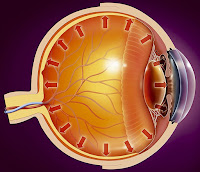Dexmedetomidine
Mechanism of Action:
-It is an
imidazole derivative and is a specific alpha-2 adrenoceptor agonist that acts
via post-synaptic alpha-2 receptors primarily in the locus ceruleus to increase
conductance through K+ channels.
Uses and Dose:
-Its main
actions are sedation, anxiolysis, and analgesia
-It is a clear,
colorless isotonic solution containing 100 g/ml of dexmedetomidine base and 9
mg/ml of sodium chloride in water. The solution is preservative-free and
contains no additives.
-Dexmedetomidine
can be administered intravenously, intramuscularly, and transdermally.
1. ICU Sedation:
-Used for sedation of initially
intubated and mechanically ventilated patients in ICU.
-Loading: 1 mcg/kg IV over 10
minutes; loading dose may not be required for adults converted from other
sedative therapy.
-Maintenance 0.2-0.7 mcg/kg/h.
continuous IV infusion; not to exceed 24 h.
-The duration of use should not
exceed 24 hours.
-Dexmedetomidine has been infused in mechanically ventilated patients before, during, and
after extubation; it is not necessary to discontinue dexmedetomidine before
extubation.
2. Procedural Sedation:
Indicated for sedation of non-intubated
patients before and/or during surgical and other procedures.
Loading: 1 mcg/kg IV over 10 minutes.
Maintenance 0.6 mcg/kg/h. IV titrate
to effect (usually 0.2-1 mcg/kg/h.).
3. Awake Fiberoptic Intubation:
Loading: 1 mcg/kg IV over 10 minutes.
Maintenance 0.7 mcg/kg/hr IV until
endotracheal tube secured.
Dosage Modifications:
-Dose reduction may be required if
co-administered with other concomitant anesthetics, sedatives, hypnotics, or
opioids.
-Consider dose reduction in patients
with hepatic impairment or aged ≥ 65 y.; clearance decreases with increasing
severity of hepatic impairment.
-Renal impairment: No dosage
adjustment required.
Pharmacokinetics
Distribution:
It is 94% protein-bound in the plasma; the volume of distribution is 1.33 l/kg.
The distribution half-life is 6 minutes.
Metabolism: The
drug undergoes extensive hepatic metabolism to methyl and glucuronide
conjugates.
Excretion: 95%
of the metabolites are excreted in the urine. The elimination half-life is 2
hours, and the clearance is 39 l/hour.
Pharmacodynamics:
1. Cardiovascular
System: It causes a predictable decrease in the mean arterial pressure and
heart rate.
2. Respiratory
System: It causes a slight increase in PaCO2 and a decrease in
minute ventilation, with minimal change in the respiratory rate—these effects
are not clinically significant.
3. Central Nervous
System: The drug is sedative and anxiolytic—ventilated patients remain easily arousable
and cooperative during treatment. Reversible memory impairment is an additional
feature.
4. Metabolic / Other:
It causes a decrease in plasma epinephrine and norepinephrine concentrations.
It does not impair adrenal steroidogenesis when used in the short term.
Side Effects:
Hypotension,
bradycardia, nausea, and a dry mouth are the most commonly reported side
effects of the drug.


































